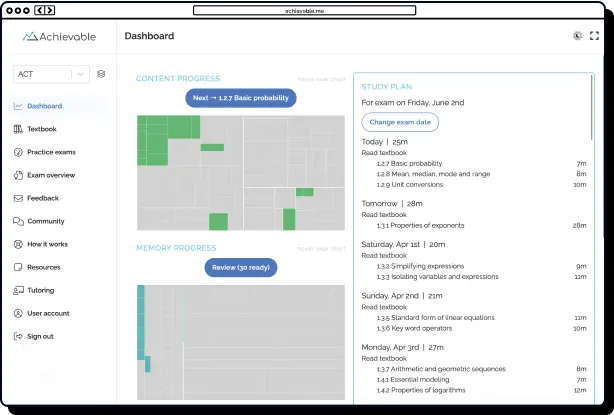
How to use First Aid for the USMLE Step 1




Table of contents
- Introduction: What is First Aid?
- What is First Aid, and why does it matter?
- What does First Aid cover?
- High-yield basic sciences
- Clinical correlations
- Hundreds of mnemonics
- Charts, tables, and diagrams
- Cross-referencing and rapid review
- Focus on Step 1 exam patterns
- What does First Aid NOT cover?
- How to use First Aid effectively at different stages?
- Early phase (first-year or basic sciences)
- Dedicated prep phase (3 - 6 months before Step 1)
- Final month (Taper + review Mode)
- Integrating First Aid with other key resources
- First Aid and Trusted USMLE Question Bank Integration
- Annotation strategies that actually work
- Common mistakes students make with First Aid
- Creating a personalized study schedule
- Annual updates: How important are they?
- Should you buy the newest edition?
- PDF vs. Physical Copy?
- Final thoughts: First Aid is a tool, not a crutch
Preparing for the United States Medical Licensing Examination (USMLE) Step 1 is widely regarded as one of the most demanding academic challenges a medical student will encounter. The experience can be overwhelming and emotional, with extraordinary pressure due to the high-stakes nature of this crucial exam. Passing the USMLE is the first step to becoming a licensed, practicing doctor in the U.S. To navigate this journey, many students turn to a book series that has stood the test of time: First Aid for the USMLE Step 1.
In this blog, we’ll explore what makes USMLE First Aid useful for Step 1 preparation, provide practical strategies to fully integrate it into your USMLE Step 1 study plan, and highlight key pitfalls to avoid during your exam prep. Whether you’re at the very start of your study timeline or already immersed in review sessions, this guide will empower you to make the most out of USMLE study materials and enhance your Step 1 preparation.

Introduction: What is First Aid?
First Aid for the USMLE is a well-known study aid among medical students. The book itself is consistently referred to as the “Bible” of USMLE Step 1 prep. This resource is comprehensive, concise, and closely mirrors what’s actually tested on the exam.
More importantly, the First Aid USMLE Step 1 series gives you a sense of structure from an overwhelming flood of other study materials. With numerous flashcards, lectures, and USMLE practice questions, First Aid for USMLE can help students keep their Step 1 preparation anchored and focused.
What is First Aid, and why does it matter?
First published over two decades ago, First Aid for the USMLE Step 1 has become a foundational resource for medical students. This essential guide evolves annually through a collaborative process, drawing on feedback from top scorers, faculty, and the broader medical student community. By aiming to fully cover current USMLE Step 1 topics in each edition, the authors have developed one of the most trusted and relevant USMLE study aids on the market.
The book itself is organized into four key sections that closely align with major USMLE Step 1 topics:
- General principles (including biochemistry, immunology, microbiology, and more)
- Organ systems
- Biostatistics and ethics
- Rapid review
What sets USMLE First Aid apart is its bullet-point format and visually clear layout, which allow you to focus on high-yield material without excess detail. While this structure streamlines the studying process, it also means that additional context and deeper explanation are often needed. Supplementing First Aid with other comprehensive resources, such as Achievable’s USMLE course, helps fill in knowledge gaps and deepen your understanding of medical topics.
What does First Aid cover?
First Aid is specifically crafted to deliver a high-yield, exam-focused, and extremely efficient study experience. Rather than teaching medicine from the ground up, First Aid prioritizes information most likely to appear on your USMLE Step 1 exam, drawing on decades of student feedback, data analysis, and evolving USMLE test trends. Including the book in your preparation can help you gain clear insight into the critical topics that truly matter. Here’s a deeper look at what First Aid for the USMLE Step 1 actually provides:
High-yield basic sciences
The core strength of First Aid lies in its comprehensive review of USMLE Step 1 topics, with a strong focus on the foundational sciences essential for high performance on Step 1:
- Biochemistry: Key metabolic pathways and molecular processes highlighted among the main USMLE topics
- Physiology: In-depth mechanisms and clinical applications integrated as core step 1 material
- Anatomy: Crucial structural concepts and associations that frequently appear on the USMLE Step 1
- Microbiology & immunology: High-yield pathogens and immune principles emphasized for step 1 preparation
- Pharmacology: Drug classes and mechanisms central to the most-tested topics
- Pathology: Disease mechanisms and major pathological findings
- Behavioral Science, ethics, and biostatistics: Covers patient interactions, ethical considerations, and population-based questions
By emphasizing these high-yield subjects, First Aid for the USMLE Step 1 2025 ensures that every major category of USMLE Step 1 topics is addressed, promising to help you concentrate on what matters for exam success.
Clinical correlations
Although First Aid is not a traditional clinical reference, it specializes in presenting USMLE questions through clinically relevant correlations, such as:
- The association of specific symptoms with distinct gene mutations
- Lab findings that support particular diagnoses, mirroring content often seen in USMLE questions
- The underlying pathology driving each clinical vignette found in USMLE scenarios
This targeted focus is essential, as the USMLE Step 1 increasingly prioritizes question-based learning and the application of knowledge to patient-centered contexts. By structuring content around the types of connections required by the modern exam format, First Aid helps students bridge foundational science with real-world clinical outcomes, providing exactly the framework needed for exam success.
Hundreds of mnemonics
Mnemonics are crucial for mastering complex topics. You’ll find clever memory tricks for everything from cranial nerves to drug toxicities. Over time, these become anchors in your mind, enabling you to retrieve important facts more quickly under pressure.
Charts, tables, and diagrams
- Every page is laid out with clean visuals: comparison tables, flowcharts, life cycles, and cross-referenced topics.
- These visual aids not only organize complex information but also help you review quickly and efficiently.
- They’re helpful for pattern recognition, a skill crucial for both studying and test-taking.
Cross-referencing and rapid review
- Every topic is referenced multiple times in different systems, demonstrating the body's (and the exam's) true integration.
- At the end of the book, there’s a “Rapid Review” section: a list of ultra-condensed facts meant for final-week revision, flashcard-style.
- Many students use this as a daily warm-up or to keep core information fresh as test day approaches.
Focus on Step 1 exam patterns
First Aid is tailored to the National Board of Medical Examiners (NBME)’s test structure, covering:
- Frequently tested facts and associations
- Common distractors and traps
- Popular topics from past exams
Because it’s constantly updated, First Aid stays in sync with what Step 1 is really testing now, which is increasingly conceptual and clinical rather than purely rote memorization.

What does First Aid NOT cover?
While First Aid walks you through the subjects and topics covered in the USMLE, it’s less detailed than other books. This is why First Aid works best as a study aid rather than your main textbook. First Aid serves as a comprehensive USMLE Step 1 study guide, providing an exhaustive outline of content to review. Your actual review process should also involve academic resources, textbooks that thoroughly cover each topic, and plenty of flashcards, USMLE practice exams, and other study tools.
How to use First Aid effectively at different stages?
Early phase (first-year or basic sciences)
Because of its bulleted format and quickly digestible material, First Aid for the USMLE Step 1 is best used as a supplement, not your main study source. When you’re in your core classes (like physiology, anatomy, microbiology), you can use First Aid to see how those topics are tested.
Tip: Annotate your First Aid with notes from class or video resources.
Dedicated prep phase (3 - 6 months before Step 1)
This is when First Aid can become a central resource. You’ll likely go through it cover-to-cover, sometimes more than once. Use it to complement your preparation.
How to use it:
- Link USMLE question banks, another popular prep resource, back to the First Aid pages.
- Use Anki decks aligned with the First Aid curriculum.
- Fill in margins with missed concepts.
- Produce USMLE study guides using First Aid outlines, which can be filled in from more comprehensive resources like Achievable’s USMLE textbook.
This is where everything clicks. You’ll start recognizing patterns, key facts, and recurring themes.
Final month (Taper + review Mode)
This is crunch time. First Aid becomes your quick reference guide.
- Focus on Rapid Review, marked sections, and areas that need improvement.
- Don’t start something new, just tighten your recall.
- If you’ve done it right, First Aid will feel like a reflection of your entire prep.
Integrating First Aid with other key resources
First Aid and Trusted USMLE Question Bank Integration
First Aid is most effective when combined with other high-yield USMLE study resources, especially USMLE question banks. Here’s how to maximize your Step 1 prep:
- UWorld: Recognized as a reliable USMLE question bank, UWorld should be your core practice tool. Link each question explanation back to First Aid for thorough review. Annotate your First Aid book with updated facts or clarifications from UWorld to reinforce your understanding and retention.
- Anki Decks: Use dedicated Q&A Anki decks like AnKing, meticulously organized by First Aid page numbers. Incorporating spaced repetition through Anki helps lock in important concepts tested in USMLE question banks.
- Achievable: Backed by memory science, Achievable’s adaptive platform works just as hard as you do to provide you with deeply comprehensive exam preparation. With an expert textbook, a quiz bank of over 1,400 questions, mock exams, and an AI study planner that tracks your progress, Achievable offers a personalized and all-encompassing study experience.
- Videos:
- Boards & Beyond offers comprehensive video explanations that provide deep foundational insights. Use them alongside First Aid sections for efficient study.
- Pathoma focuses on pathology; sync its teachings with the corresponding path sections in your First Aid.
- Sketchy is an ideal source for some students to visualize microbiology and pharmacology content. Cross-reference with relevant First Aid pages to enhance memory.
- NBME Practice Tests: NBME exams closely simulate the real USMLE format and expose knowledge gaps. After each practice test, revisit First Aid and your question bank explanations to address any weaknesses or missed concepts.
Utilizing First Aid in conjunction with your chosen USMLE materials ensures comprehensive coverage and strengthens your recall, setting you up to excel on Step 1.

Annotation strategies that actually work
A blank first aid book turns into your personal medical journal over time. But it’s easy to go overboard.
Smart annotation tips:
- Only write down what you misunderstood or what isn’t already there.
- Use shorthand, symbols, or sticky tabs for quick access.
- Don’t crowd the page. If something requires too much space, use a separate notebook or digital tool (like Notion or OneNote).
Remember: every annotation should be meaningful.
Common mistakes students make with First Aid
Here are some pitfalls to avoid:
- Passive reading: Don’t treat first aid like a novel. It’s meant for active recall.
- Using it too early: Before you’ve learned the content through classwork and more complete resources, First Aid won’t make sense.
- Ignoring updates: The yearly editions change. Always use the most recent one.
- Over-highlighting: Highlighting won’t help you remember; application does.
Creating a personalized study schedule
Every medical student’s approach to mastering Step 1 is unique, but most effective USMLE Step 1 study plans include consistent routines:
Weekly plan example for a strong USMLE Step 1 study schedule:
- Mornings: Complete question blocks and thoroughly review explanations, then annotate high-yield concepts into First Aid as part of your USMLE Step 1 study plan.
- Afternoons: Dive deeper into focused First Aid sections, targeting 1 - 2 critical subjects each day to reinforce core knowledge. Fill in knowledge gaps from longer and more detailed academic and test prep books.
- Evenings: Space out your flashcards or supplement your learning with key videos to maintain active recall.
Sundays: Simulate exam conditions with full Achievable and NBME practice exams and dedicate time to an in-depth First Aid-related review of missed material.
Remember, consistency over intensity is the foundation of every effective USMLE Step 1 study plan. A steady daily effort will drive long-term retention and success.
Annual updates: How important are they?
Each year, first aid is updated with:
- New facts
- Reorganized sections
- Better mnemonics or images
- Removal of outdated content
Should you buy the newest edition?
Yes, especially if the NBME blueprint has undergone significant changes or your test is more than six months away.
PDF vs. Physical Copy?
Personal preference! Many love annotating paper, others prefer searchable PDFs. Choose what helps you study better.

Final thoughts: First Aid is a tool, not a crutch
First Aid isn’t magical. It won’t replace your hard work or deep understanding. But it can be a powerful weapon in your USMLE arsenal.
If used right:
- It keeps your prep focused.
- It connects all your resources together.
- It gives you an accurate sense of what will be tested.
- It provides a personalized roadmap for test day.
Paired with other expertly written resources, First Aid can become a reliable staple in your USMLE study preparation.

